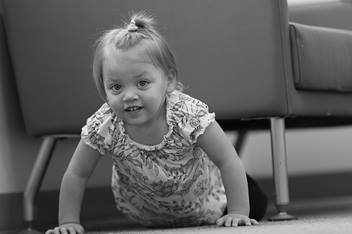Echocardiography
The echocardiography laboratory at Nationwide Children’s interprets over 11,000 echocardiograms per year for patients ranging from fetal life to adults with congenital heart disease, including transthoracic, transesophageal, fetal, intracardiac, three-dimensional, and stress echocardiograms, and is the largest volume echocardiography laboratory in the state.
Our echocardiography laboratory has also been accredited by the Intersocietal Commission for the Accreditation of Echocardiography Laboratories (ICAEL) in pediatric transthoracic echocardiography, transesophageal echocardiography, and fetal echocardiography.
We are fully digital and actively integrated with telemedicine, allowing us to provide echocardiography services to all of the Neonatal Intensive Care Units in Columbus, as well as receiving echocardiograms from multiple other institutions in the state for interpretation.
What is an Echocardiogram and What is it Used For?
The echocardiogram (commonly called echo) is a safe and painless test that allows the doctors to evaluate the anatomy and the function of the heart, and therefore diagnose heart problems when present.
The echo machine uses high frequency sound waves (ultrasound) that, when sent through the body via the transducer, echo or “bounce” off the heart and the surrounding structures, and by listening to those echoes, the machine generates pictures of the beating heart on its screen.
The echocardiogram is one of the most widely used tests in children for evaluation of heart disease, performed on children of all ages and sizes, including newborns and fetuses.
Children younger than three years of age may have trouble lying still for long periods of time. Because of the important need to get good pictures, the doctor may order a sedated Echo. A sedated Echo means that a child will be asleep while the test is done. The medicine given will not be anesthesia.
Your Visit: What to Expect and How to Prepare
Please sign in when you enter the waiting room of the Non-Invasive Cardiology Clinic, and you will be called shortly after at one of the registration windows.
After registration formality has been finished, you will be called by a member of our medical staff and guided inside our department. Current height and weight of the child will be taken and you will be escorted to the assigned exam room where a sonographer will perform the echocardiogram.
There is no special preparation required for this exam; however here are some tips that might be helpful:
- Do not overdress your infant or toddler; we will need access to his chest and belly (everything off from the waist-up). Try to stay away from one-piece undershirts or “onesies” because undressing sometimes upsets the child and makes the exam more challenging.
- Limit or don’t apply any lotion, cream, powder or baby oil on the child’s chest on the day of the exam.
- Feel free to bring along comfort items for your child (favorite toy, blanket, etc.), or a favorite DVD that we can let play on the TV in the exam room for the duration of the exam. You will stay with your child during the exam.
- There are no dietary requirements for this exam.
The Examination Rooms and the Exam
The first thing that you will notice in our exam rooms is that the lights are dimmed. The darker than normal environment allows us for better visibility of the screen.
The child will be asked to remove his or her shirt and lie down on the bed. A gown will be given to wear to protect the privacy of the older children.
Three small stickers will be placed on the child’s chest with wires connecting them to the echo machine. This will allow the machine to report the heart rate.
The ultrasound transducer or “camera” is what we will use to obtain the images, and that is simply a small probe that has a softer, rubbery face. We will apply a small amount of water based gel on the transducer’s face that will allow for better contact with the skin and therefore better quality of the images.
The sonographer will move and rotate the transducer in different positions throughout the exam which allows for different views of the heart. The applied pressure should not be painful, but if it makes the child uncomfortable, he or she should tell you or the sonographer. During the exam, the sonographer might switch to different transducers in order to obtain the best possible images.
It is very important that the child stays calm and still during the test. For this purpose the parents are encouraged to comfort their children during the test by being active and creative.
The test on average lasts between 30 to 60 minutes. Upon completion the sonographer will wipe off the gel and remove the stickers from the child’s chest.
It is important to note that the sonographer will not give any results to the family; the results from the test will be given by your doctor.

